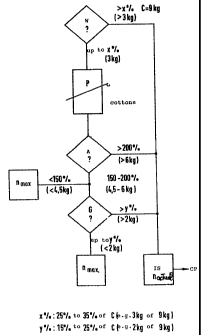Some of the information on this Web page has been provided by external sources. The Government of Canada is not responsible for the accuracy, reliability or currency of the information supplied by external sources. Users wishing to rely upon this information should consult directly with the source of the information. Content provided by external sources is not subject to official languages, privacy and accessibility requirements.
Any discrepancies in the text and image of the Claims and Abstract are due to differing posting times. Text of the Claims and Abstract are posted:
| (12) Patent: | (11) CA 2360476 |
|---|---|
| (54) English Title: | METHOD FOR OPERATING A FRONT-LOADING WASHING MACHINE |
| (54) French Title: | METHODE D'UTILISATION D'UNE LAVEUSE A CHARGEMENT FRONTAL |
| Status: | Deemed expired |
| (51) International Patent Classification (IPC): |
|
|---|---|
| (72) Inventors : |
|
| (73) Owners : |
|
| (71) Applicants : |
|
| (74) Agent: | RIDOUT & MAYBEE LLP |
| (74) Associate agent: | |
| (45) Issued: | 2009-10-20 |
| (22) Filed Date: | 2001-10-30 |
| (41) Open to Public Inspection: | 2002-05-15 |
| Examination requested: | 2006-09-25 |
| Availability of licence: | N/A |
| (25) Language of filing: | English |
| Patent Cooperation Treaty (PCT): | No |
|---|
| (30) Application Priority Data: | ||||||
|---|---|---|---|---|---|---|
|
The invention concerns a method for operating a front-loading washing machine with a washing aggregate comprising a tub holding a rotatably-mounted drum suspended in the machine housing so as to be able to oscillate with a midaxis descending from front to back and equipped an imbalance sensor that changes the rotation of the drum by means of a control program when an imbalance occurs in the spin cycle. In many cases of operation an improved spin result can be achieved for a small loads of cotton laundry and the related laundry absorbency by disabling the imbalance sensor and running the spin cycle at the programmed maximum speed.
Cette invention concerne une méthode permettant de faire fonctionner une machine à laver à chargement par l'avant à l'aide d'un agrégat de lavage composé d'une cuve retenant un tambour fixé par rotation suspendue dans le carter de l'appareil de manière à pouvoir osciller avec un axe central descendant de l'avant vers l'arrière et muni d'un capteur de déséquilibre qui change la rotation du tambour à l'aide d'un programme de commande lorsqu'un déséquilibre se produit dans le cycle d'essorage. Dans plusieurs cas de fonctionnement, un meilleur résultat d'essorage peut être obtenu pour les petites quantités de vêtements en coton à laver et de la capacité d'absorption de ceux-ci en désactivant le capteur de déséquilibre et en faisant fonctionner le cycle d'essorage à la vitesse maximale programmée.
Note: Claims are shown in the official language in which they were submitted.
Note: Descriptions are shown in the official language in which they were submitted.

For a clearer understanding of the status of the application/patent presented on this page, the site Disclaimer , as well as the definitions for Patent , Administrative Status , Maintenance Fee and Payment History should be consulted.
| Title | Date |
|---|---|
| Forecasted Issue Date | 2009-10-20 |
| (22) Filed | 2001-10-30 |
| (41) Open to Public Inspection | 2002-05-15 |
| Examination Requested | 2006-09-25 |
| (45) Issued | 2009-10-20 |
| Deemed Expired | 2012-10-30 |
There is no abandonment history.
| Fee Type | Anniversary Year | Due Date | Amount Paid | Paid Date |
|---|---|---|---|---|
| Application Fee | $300.00 | 2001-10-30 | ||
| Registration of a document - section 124 | $100.00 | 2001-12-12 | ||
| Maintenance Fee - Application - New Act | 2 | 2003-10-30 | $100.00 | 2003-10-06 |
| Maintenance Fee - Application - New Act | 3 | 2004-11-01 | $100.00 | 2004-10-06 |
| Maintenance Fee - Application - New Act | 4 | 2005-10-31 | $100.00 | 2005-10-14 |
| Request for Examination | $800.00 | 2006-09-25 | ||
| Maintenance Fee - Application - New Act | 5 | 2006-10-30 | $200.00 | 2006-10-04 |
| Maintenance Fee - Application - New Act | 6 | 2007-10-30 | $200.00 | 2007-10-03 |
| Maintenance Fee - Application - New Act | 7 | 2008-10-30 | $200.00 | 2008-10-02 |
| Final Fee | $300.00 | 2009-07-31 | ||
| Maintenance Fee - Patent - New Act | 8 | 2009-10-30 | $200.00 | 2009-10-05 |
| Maintenance Fee - Patent - New Act | 9 | 2010-11-01 | $200.00 | 2010-09-16 |
Note: Records showing the ownership history in alphabetical order.
| Current Owners on Record |
|---|
| WHIRLPOOL CORPORATION |
| Past Owners on Record |
|---|
| BRAUN, WALTER |
| LAUE, MICHAEL |